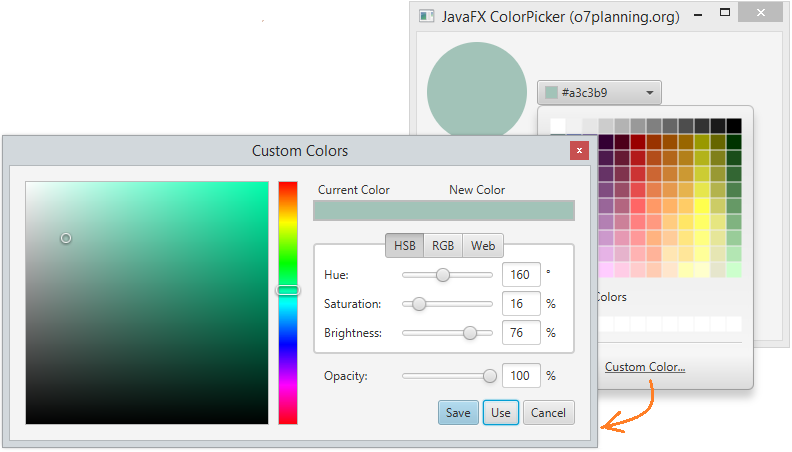

- JAVAFX COLORPICKER ANYWHERE ON SCREEN UPGRADE
- JAVAFX COLORPICKER ANYWHERE ON SCREEN CODE
- JAVAFX COLORPICKER ANYWHERE ON SCREEN PROFESSIONAL

Styling This is virtually all of the other elements of a Node’s appearance that aren’t layout. Also, this includes how the properties of the Nodes are bound to the Model. It also defines how various Nodes on the screen are related to each other functionally. It includes things like actions on Button clicks, responses to having focus, whether or not a Node is visible and how this is controlled. Configuration This defines how the Nodes will behave. How they are aligned, which Nodes contain other Nodes, padding and margins. If you think about it, you’ll realize that, in general, there three elements to the UI of an application: The Layout This is how the various Nodes will be positioned on the screen. We’re going to look at Cascading Style Sheets and how they have been implemented in JavaFX. It works, but it’s really cumbersome and complicated to read - especially when a Node has extensive styling applied.

Most programmers start out with JavaFX by manually applying styling to their Nodes using the tStyle() method. Understanding and Using the Default StyleSheet: Modena.
JAVAFX COLORPICKER ANYWHERE ON SCREEN PROFESSIONAL
Professional Java developers who are interested in learning the latest client Java development techniques to fill out their skills set. Deploy on desktop, mobile, and embedded devices.Use advanced visualization and 3D features.Create modern client applications in Java using the latest JavaFX 17 and Java 17 LTSīuild enterprise clients that will enable integration with existing cloud services.
JAVAFX COLORPICKER ANYWHERE ON SCREEN CODE
Note: source code can be downloaded from .
JAVAFX COLORPICKER ANYWHERE ON SCREEN UPGRADE
It offers end-to-end coverage of the latest features in JavaFX 17 and Java 17.Īmong the many new or updated JavaFX features covered are the FX Robot API, for simulating user interaction customized step repeat timing for the Spinner control Marlin FX the ColorPicker color palette and the GetCenter method.Īfter reading this book, you will be equipped to upgrade legacy client applications, develop cross-platform applications in Java, and build enhanced desktop and mobile native clients. The Definitive Guide to Modern Java Clients with JavaFX 17 is a professional reference for building Java applications for desktop, mobile, and embedded in the Cloud age. This book will show you how these applications can take advantage of JavaFX’s latest user interface components, 3D technology, and cloud services to create immersive visualizations and allow high-value data manipulation. Build enhanced visual experiences and design and deploy modern, easy-to-maintain, client applications across a variety of platforms.


 0 kommentar(er)
0 kommentar(er)
